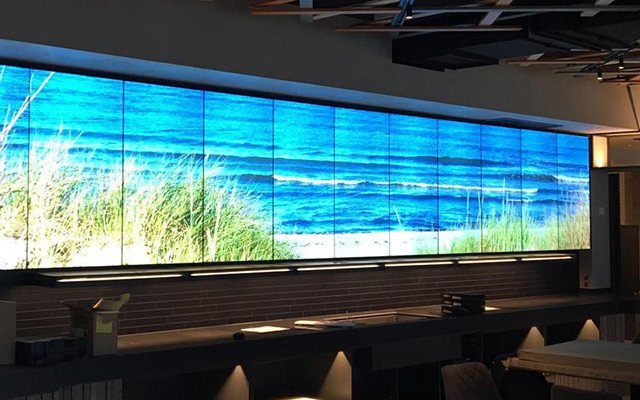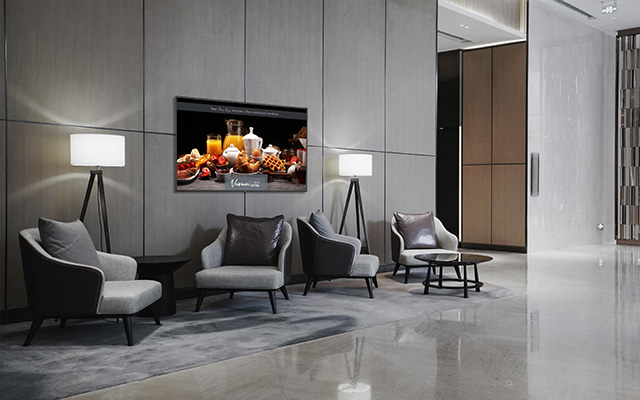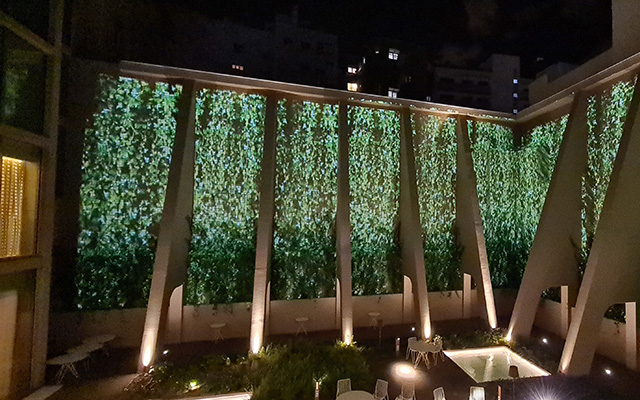Digital signage in the hotel and restaurant industry: technology to enhance the guest experience.
The hotel and restaurant industry is once again gaining traction, and is at pre-pandemic levels in most countries. For many guests, contemporary multimedia equipment is a decisive factor when choosing their destination. Be it in a youth hostel, luxury hotel, restaurant or cafeteria, a guest’s stay should be as comfortable as possible. As a result, sophisticated digital signage concepts are becoming increasingly important.
Martin Lienau, Product Manager Large Format Displays at Sharp/NEC, knows what matters when it comes to digital signage systems in the hotel and catering industry, and how to integrate a convincing concept into the “guest journey”.

The potential of digital signage installations
The potential uses and application scenarios of digital signage are extremely diverse. Digital surfaces and interactive screens supply a variety of data and information and offer many different ways to inspire and entice the viewer. In the SlowDown Hotel Travemünde, for example, images from nature such as sand dunes and ocean views evoke a relaxed beach vibe in the restaurant.

Digital signage solutions can be used anywhere in the hotel and restaurant industry where previously roll-up posters or other static display boards were used.
Digital signage has two main advantages: it's dynamic and its flexible. Information can be communicated in real time in the form of videos, texts or images and updated in minutes. Signage technology, be it (large format) displays, LED installations or projectors, can be managed centrally via internal network, or even via an app, allowing users to manage all the connected technologies and associated content from one place.
From “Welcome” to “Goodbye” via large format display
Digital signage solutions can be used in the hotel and restaurant industry in a targeted way across the entire guest journey. Starting in the entrance area, a large format display can welcome visitors or inform them about current hygiene measures and special offers. If a guest is on site for a conference they can follow the digital signage (wayfinding) to find the appropriate conference room.
Daily offers such as lunch specials in the restaurant can be advertised via digital menu boards – if a dish is already sold out, for example, this can be communicated directly via the screens. In the hotel room, digital signage shows guests what leisure activities are available in the region. Toward the end of their stay, a personalised “goodbye” can be sent, or final tips given for their journey home.


The SlowDown Hotel Travemünde, for example, incorporatess video installations into the guests’ overall experience and is brimming with the latest technology. Whether in the reception, the lobby or the fireplace room, the installed large format displays always create the right ambience or serve as a source of information. They can even be found in the sauna and spa area, in keeping with the motto “multimedia relaxation”. What stands out most, however, are the large video walls in the hotel’s tapas bar and main conference room – they are the highlight of the multimedia installation.
The Lumen Hotel in Lisbon is another example, using projection mapping technology with laser projectors to cleverly play with the architecture in the courtyard. Here, the hotel creates the unique “Light of Lisbon” show, which takes guests on a magical journey every day.
Sustainable display solutions
More and more companies are placing great importance on limiting the ecological footprint of digital signage installations. The topic of sustainability thus also plays a major role when selecting display solutions – especially when it comes to power consumption. This is where “green signage” solutions come in. With the help of the right media player, for example, the playback of content can be automated to only play at certain times of the day. It is also possible to set up a smart wake-up function, which is only activated when a guest is standing in front of the screen. This works by integrating IoT sensors, which can also record a number of other parameters. In this way, digital signage systems can even be integrated into smart building platforms.
Your partner for the digitalisation of the hotel and restaurant sector
In order to develop meaningful overall concepts, Sharp/NEC as a manufacturer is at your side from A to Z in both strategy and implementation – strengthened by a comprehensive partner ecosystem.
You can learn more about our solutions for the hotel and restaurant industry here.
